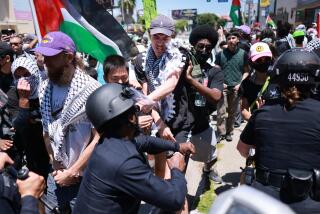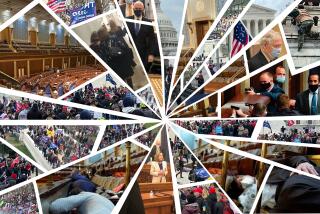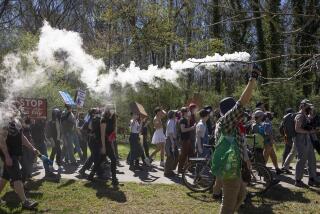When protesters are attacked in Portland, these volunteers come to their aid
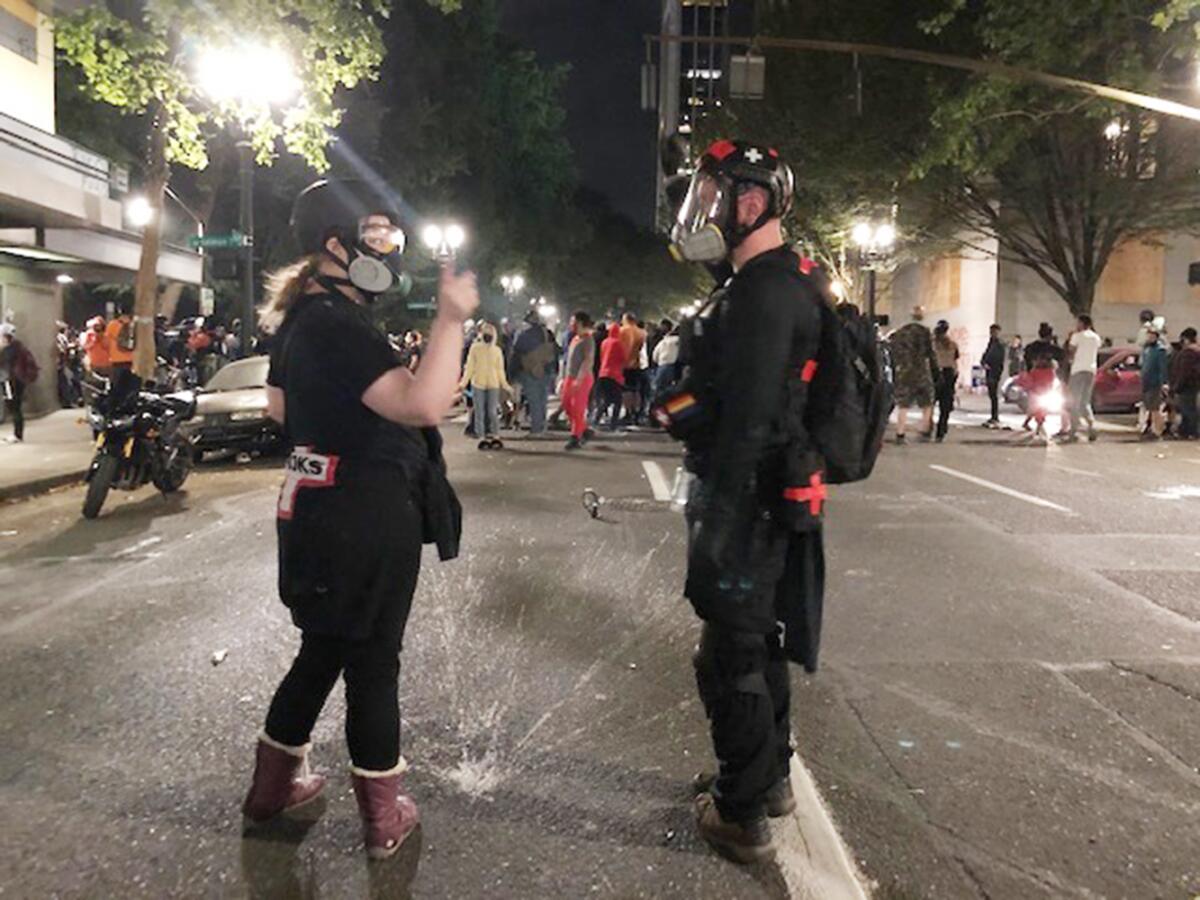
- Share via
PORTLAND, Ore. — It was 10 p.m. Wednesday when Davis Beeman and his team of volunteers gathered outside a light rail station in downtown Portland, Ore., to prepare for another night of demonstrations.
The streets were packed and the mood was festive. But everyone knew the calm would not last.
For weeks Beeman had been providing first aid to protesters.
The seven volunteers suited up in helmets, gas masks and vests marked with red crosses. They stuffed their backpacks with gauze, saline, bandages and iodine.
“Tonight could get bad,” Beeman told his group.
The protests have intensified in recent days, fueled in large part by the presence of federal agents that the Trump administration sent to the city without the consent of local politicians and who have been accused of nabbing protesters off the streets without probable cause and taking them away in unmarked vehicles.
The mayor had come out Wednesday night to address the protesters, and though the city has called for the agents to leave, Beeman worried that the appearance would only inflame tensions.
His team began making its way toward the federal courthouse, now the epicenter of the nightly demonstrations.
“Glad you’re here!” more than one person shouted to them. “Thanks for all you do!”
The volunteers staked out a corner and stood watch, waiting for cries of help or messages from other teammates watching livestreams of the protests online.
By 11:30 p.m., the crowd outside the courthouse had swelled to nearly 1,000 people. Drums beat in the background as protesters intensified their chants cursing the police, the mayor and the federal agents. Some set off fireworks.
A small fire burned inside the fence that federal agents had erected in front of the courthouse.
Beeman sensed the tension was about to reach a tipping point. Suddenly, as he turned his head to talk to a fellow medic, there was a loud boom. White smoke filled the sky — tear gas.
The federal officers had fired it from inside the courthouse to disperse the crowd.
“Get back!” a protester shouted. “Get back!”
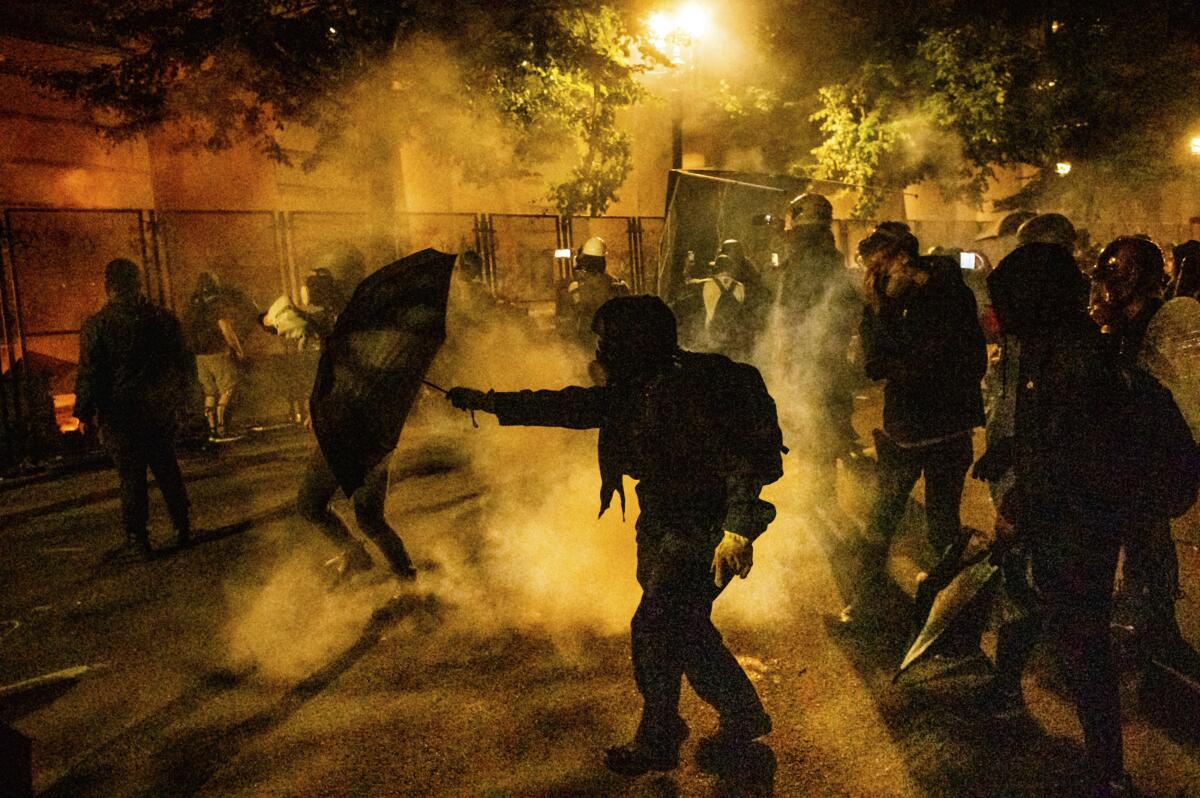
Beeman, a 38-year-old cybersecurity expert, had been coming to the protests since they began in late May. He strongly supports the national movement against racism and police brutality, and as a Navy veteran with basic training in first aid and combat awareness, he figured he could be an asset to the cause.
At first he worked on his own, milling through the crowds looking for anybody who needed help. But eventually he joined a newly formed group called Emergency Workers for our Kommunity, or EWOK, which was started by supporters of Danialle James, a prominent local Black activist.
One of several groups providing aid to protesters, the organization has several dozen volunteers who work in small teams. The volunteers include a few doctors and nurses, but most have only informal medical training.
In recent days, Beeman and many of his teammates had been hit by pepper balls and rubber bullets.
As he made his way up the block, he urged the crowd to retreat.
“Don’t run!” he yelled. “Walk!”
He noticed that a man beside him with a leaf blower — used to dissipate tear gas — appeared to be choking.
“It’s my lungs,” the man said. “I can’t breathe.”
Beeman assessed what was wrong with him, cleared his eyes with saline, pulled out a bottle of water and then escorted him out of the area.
Brooke Hazel, another volunteer on Beeman’s team, tried to reassure the frantic protester.
“Do you have any prior medical conditions?” she asked.
The man shook his head no as he gasped for air.
“Listen to me, I will help you,” said Hazel, a 37-year-old bank teller.
There wasn’t much time.
“Medic!” somebody yelled. “We need a medic!”
It took Beeman several seconds to find a protester sitting nearby, eyes closed and head tilted back — another tear gas victim.
Several more blasts of tear gas echoed from the courthouse a block away.
James, the activist, slowly approached the fence blocking the entrance to the courthouse.
“We can see you!” she shouted through a loudspeaker at the federal agents she spotted through the open door.
“Black lives matter!”
The protesters cheered.
Black Lives Matter leaders estimated that roughly 2,000 people were present — an increase that they attribute to the growing showdown in recent weeks over the presence of federal agents.
Oregon Atty. Gen. Ellen Rosenblum has sued four federal agencies to require that agents properly identify themselves, stop carrying out arrests without warrants or probable cause, and explain to people why they are being detained.
Portland Mayor Ted Wheeler tried to address the crowd Wednesday night with an anti-Trump message. But he was quickly shouted down by protesters who have accused him of failing to rein in the Portland Police Bureau, which they say has been cooperating with federal agents.
At some point, he too was stung by tear gas, according to the Associated Press.
He was already gone when Hazel heard somebody else yell for a medic.
A man sitting on a folding chair in the middle of the street thrust his head forward and pointed to his collarbone. He had been hit by a projectile.
Beeman took a pack of gauze from his backpack and tended to the wound.
By 1 a.m., his team had tended to more than a dozen injured protesters. Demonstrators were starting to go home.
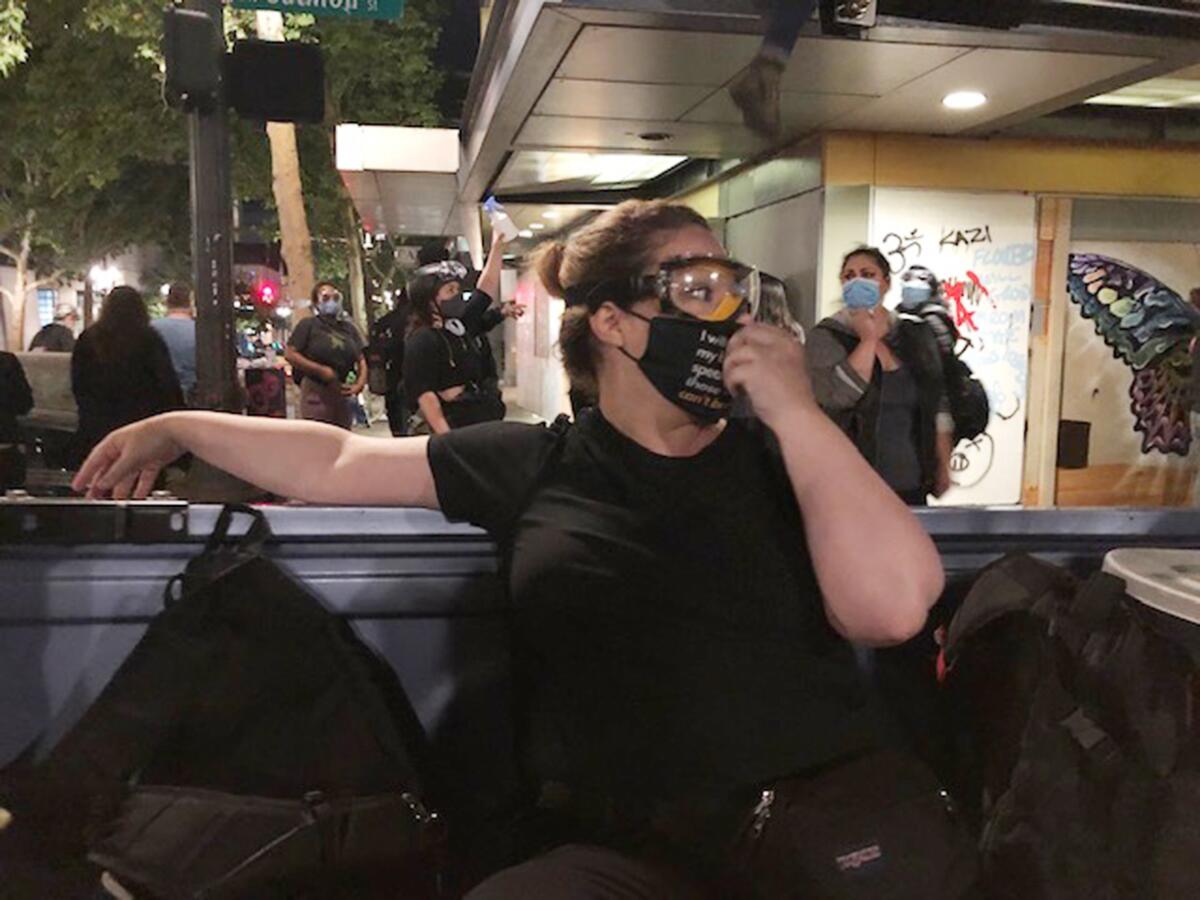
“How are you all feeling?” Beeman asked his teammates.
“I still want to be out here,” one responded.
“I need to call it a night. I haven’t had much sleep,” another said.
“Since some of us are feeling mentally checked out, we should call it a night,” Beeman said before walking several volunteers to their car.
A few stayed behind as the crowd thinned to a few hundred.
Beeman and three other volunteers climbed in his pickup.
As they drove away, a loud bang caught their attention. Tear gas stung their eyes and filled their throats. For a moment, they considered going back.
But they needed to start resting up for the next day.
More to Read
Sign up for Essential California
The most important California stories and recommendations in your inbox every morning.
You may occasionally receive promotional content from the Los Angeles Times.
